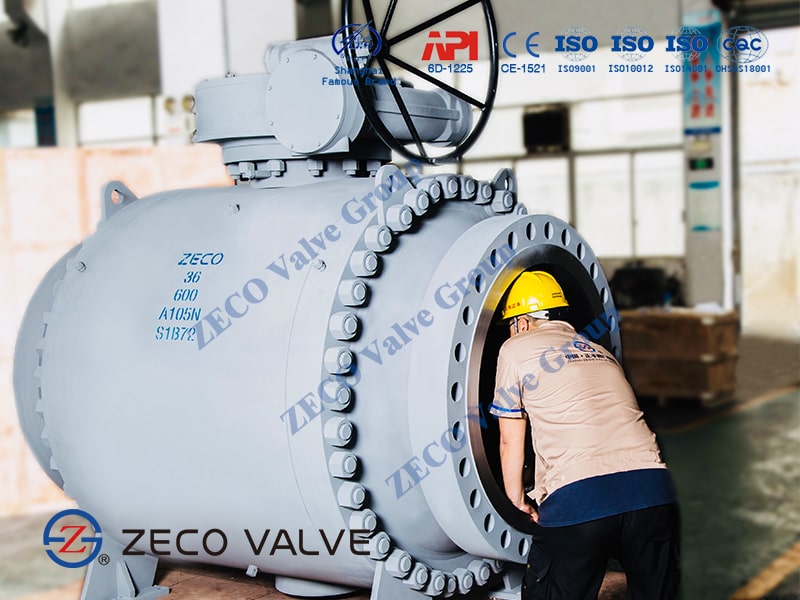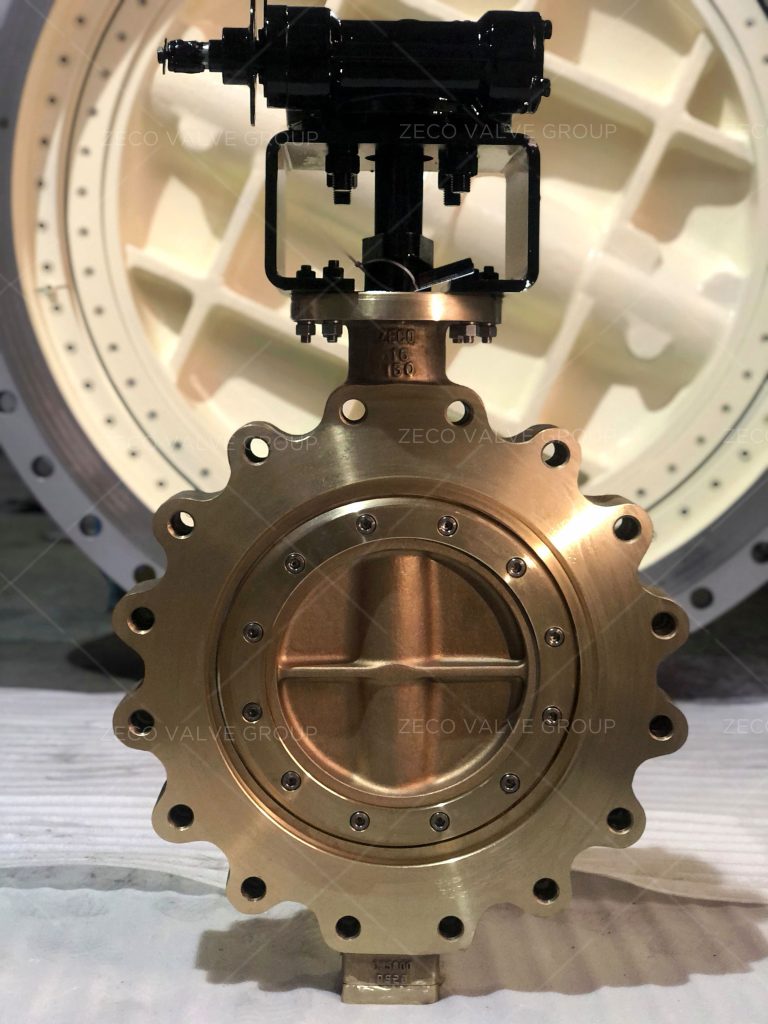Ball valves and butterfly valves have a lot in common. Both are quarter-turn valves, which makes them easy to open. Both are quite popular because of their simple designs and low cost. Because of these factors, it might be hard to choose which one is best for you. In this article, you are going to know the difference between the ball valve and the butterfly valve to help you make an intelligent choice.
What is a Ball Valve?
A ball valve consists of a floating ball with a hole running through it. When the valve is activated, the hole is aligned in a way that blocks, partially blocks, or completely opens the flow of liquid or gas. There are several benefits to using ball valves, including the tight seal, which is ideal for applications involving gas flow. They are often used in high-pressure liquid or gas lines that are less than 6 inches in diameter. Ball valves offer almost no resistance when turning them, even if the supply side is creating high pressure. Some designs provide no drops in pressure. Most ball valves can operate in temperatures between -30℃ to 230℃. There are several kinds of ball valves, including:
- Full-port ball valve: The hole in the ball is the same size as the pipeline, providing an uninterrupted flow. In this approach, no friction loss occurs due to different opening sizes.
- Reduced-port ball valve: The hole in the ball is slightly smaller than the pipe, which somewhat restricts flow. This design increases the velocity of the flow and makes the valve less expensive.
- V-port ball valve: In this design, the ball or seat is V-shaped. As the valve is activated, the small end of the V opens first, providing a more stable flow. Many choose to use these valves in applications where more control or high velocity is required. They tend to have a more sturdy construction that can hold up against high velocities that may ruin another valve.
- Cavity filler ball valve: For some applications, such as those in food production or healthcare, the residue that stays inside a ball valve can become a health hazard. Changing the fluid that goes through the pipe could lead to contamination issues, as well. A cavity filler plugs the hole by extending the seats, preventing these buildups from occurring.
- Trunnion ball valve: The ball is anchored to the top and bottom of the valve. This design is often required in large-scale or high-pressure applications to prevent the ball from floating off and causing problems with the seating mechanism.

What is a Butterfly Valve?
Butterfly valves have a disc driven by a hand wheel or lever. The disc sits perpendicular to the fluid flow direction when it’s closed, while a seal sits on the valve body to ensure tight and secure closure. The stem position while opening or closing the valve is often directly proportional to the flow rate.
Butterfly valves are lightweight, have the least parts, and require little support. Similarly, they are cheaper than ball valves, especially beyond a certain diameter size. However, they aren’t suitable for high-pressure applications since high-pressure differences between the valve’s seal and the sides make it difficult to open the valve. A solution is to use a bypass valve to balance this pressure difference and enhance a smooth operation.

Butterfly Valve vs Ball Valve
| Butterfly valve | Ball valve | |
| Weight | Lighter weight even at larger pipe diameters | Very heavy at larger pipe diameter and may require support |
| Installation space | Requires smaller installation space | Requires larger space than a butterfly valve |
| Size | Suitable for larger pipe diameter (above DN 150), particular due to lightweight | Better suited for smaller pipe diameter (below DN 50) |
| Leakage | Prone to leakages at a high-pressure difference | Provides tight seal even at a high-pressure difference |
| Cost | Cheaper than a ball valve, particularly for larger sizes | More expensive compared to a butterfly valve |
| Flow control | Suitable for ON/OFF control but can be used for proportional control. | Functions well for both ON/OFF and modulating control |
| Flow restriction | The valve disc restricts flow creating a pressure drop. | Full port ball valves have no pressure drop. |
| Connection style | It has a flange style with a lug or wafer design | A wide array of connection types with threads or flanges |
Application of Butterfly Valve vs Ball Valve
Butterfly valves are commonly used in water-based processes such as sewages, beer and soda production, etc. They are popular in chemical, agricultural, waste treatment plants, and food industries, partly because they are easy to clean. Ball valves can handle both liquid and gases with some solid particles (slurry). They are common in process plants, power plants, petroleum refining, oil, and gas exploration as they can be pigged for cleaning.
Function of Ball Valve vs Butterfly Valve
Ball valves are used only for isolation. Ball valves are known for their bubble-tight shutoff. Rarely would you see a ball valve used as a control valve because the soft elastomeric seats get damaged easily in this condition?
When the ball valve is open, there is very little interference from the valve parts, hence, there is a little pressure drop. These valves are precise when used in high-pressure applications. There is no need for a pressure balancing scheme to equalize internal pressure.
Butterfly valves can act as isolation and control valves. But these don’t provide a bubble-tight shutoff. For this valve to be a great throttling valve, it needs the media should be slow-moving to avoid friction brought by the fast velocity of the media.
Also, there is a substantial pressure drop in the linear pressure when the butterfly valve is open. The disc is always in contact with the media as it flows. This results in a change in pressure.
For larger butterfly valves, a by-pass valve may be installed to compensate for the balance of pressure. Additionally, larger butterfly valves may need pneumatic or electronic actuation as these valves are difficult to manually open.
Flow Capacity of Butterfly vs Ball Valve
Butterfly valves can provide a larger flow capacity as they are readily available at a larger pipe diameter than a ball valve.
Conclusion
Bal valves and butterfly valves are inexpensive, practical, and last long. Which one to pick depends on the nature of your projects. Butterfly valves in America are also of good quality and can also consider by some nice manufacturers. Contact a highly dependable valve manufacturer for assistance when choosing the right kind of valve. Or you can also get the great manufacturers in this complete valve manufacturers guide in China.
Related Tags :
Ten articles before and after
Top 5 Butterfly Valve Manufacturers in the USA – Zeco Valve
Introduction of V-type Ball Valves
Ball Valves?Forged Steel VS. Cast Steel
How Does a Butterfly Valve Work – Zeco Valve
Difference Between Double Offset and Triple Offset Butterfly Valve – Zeco Valve












